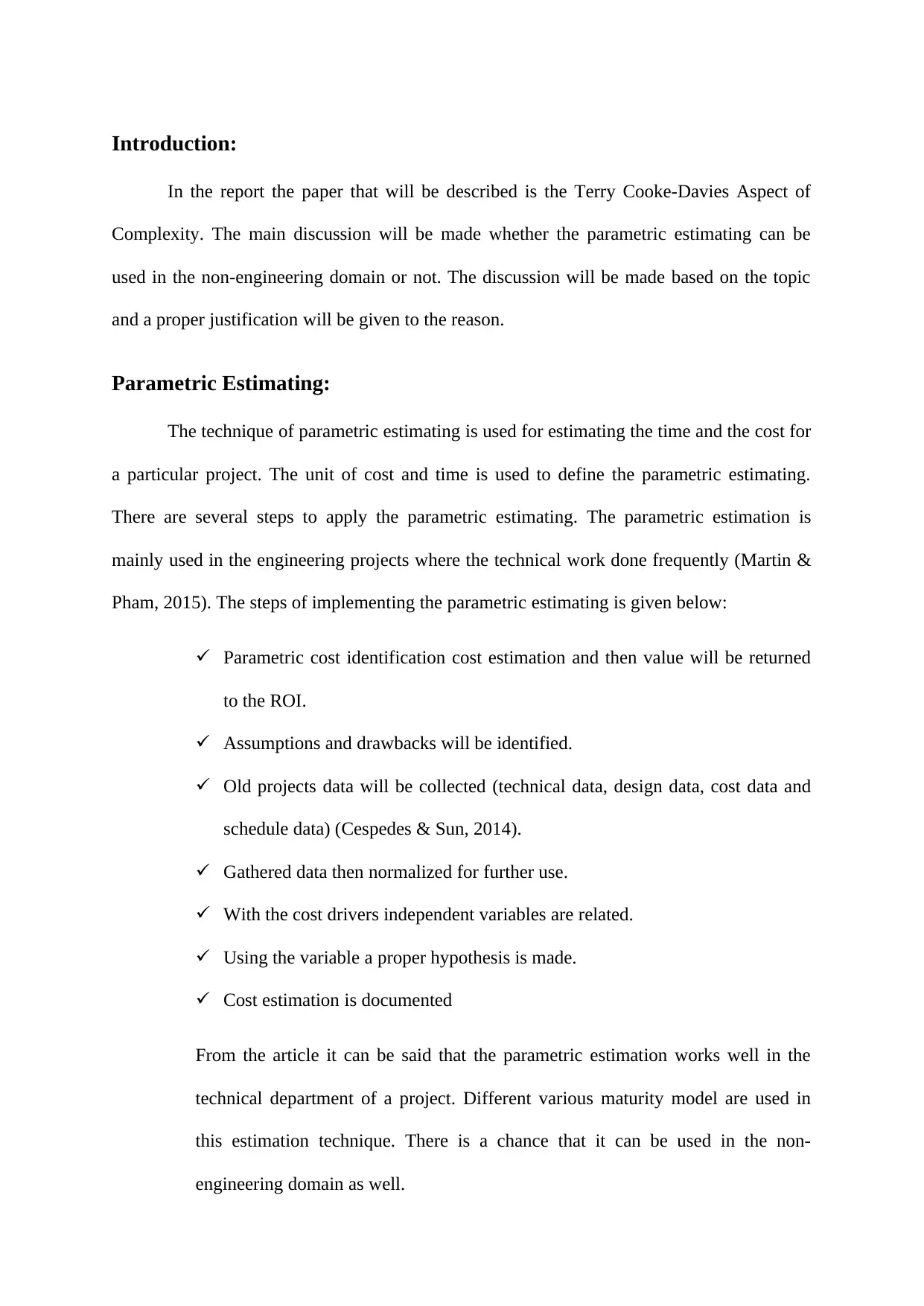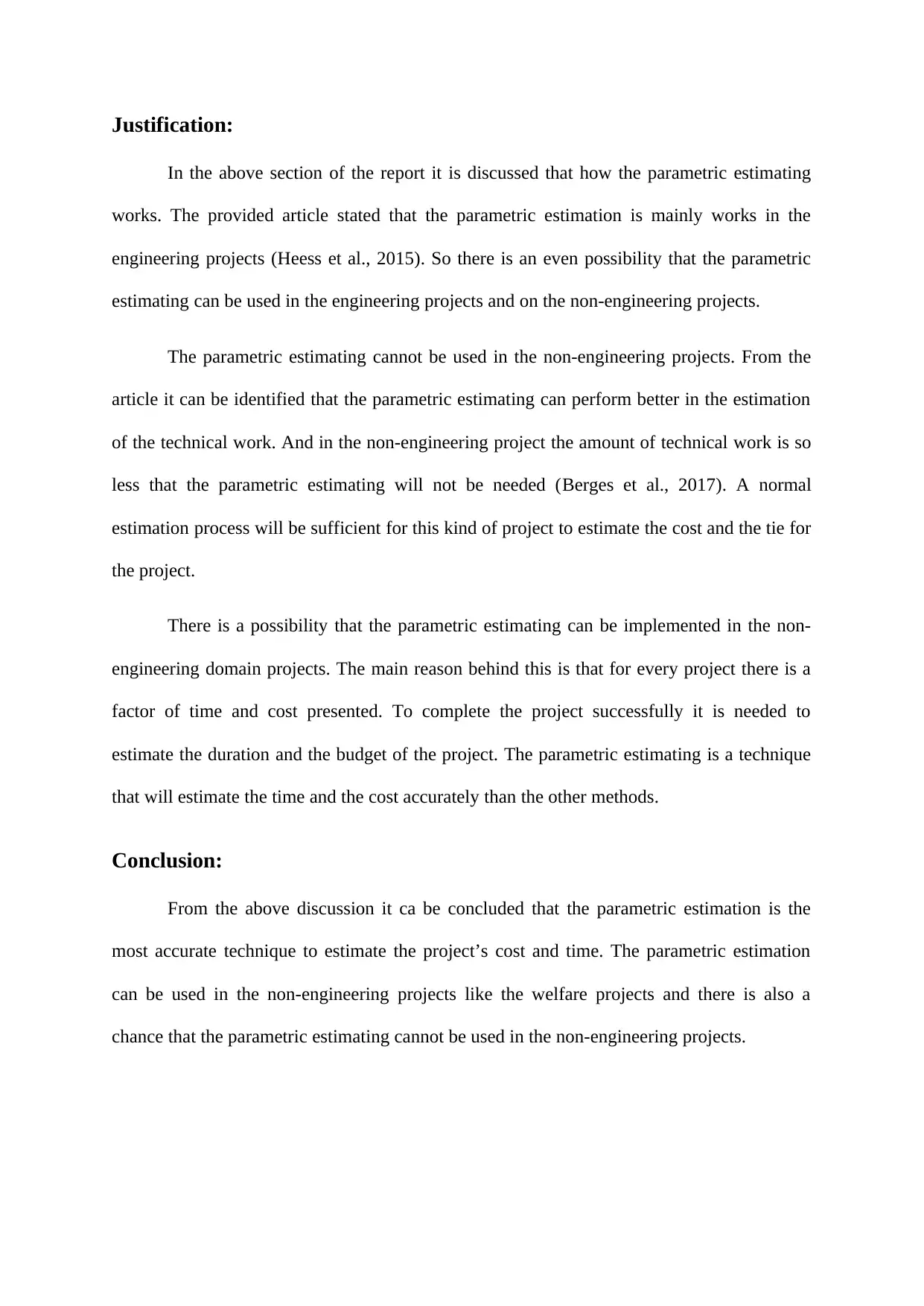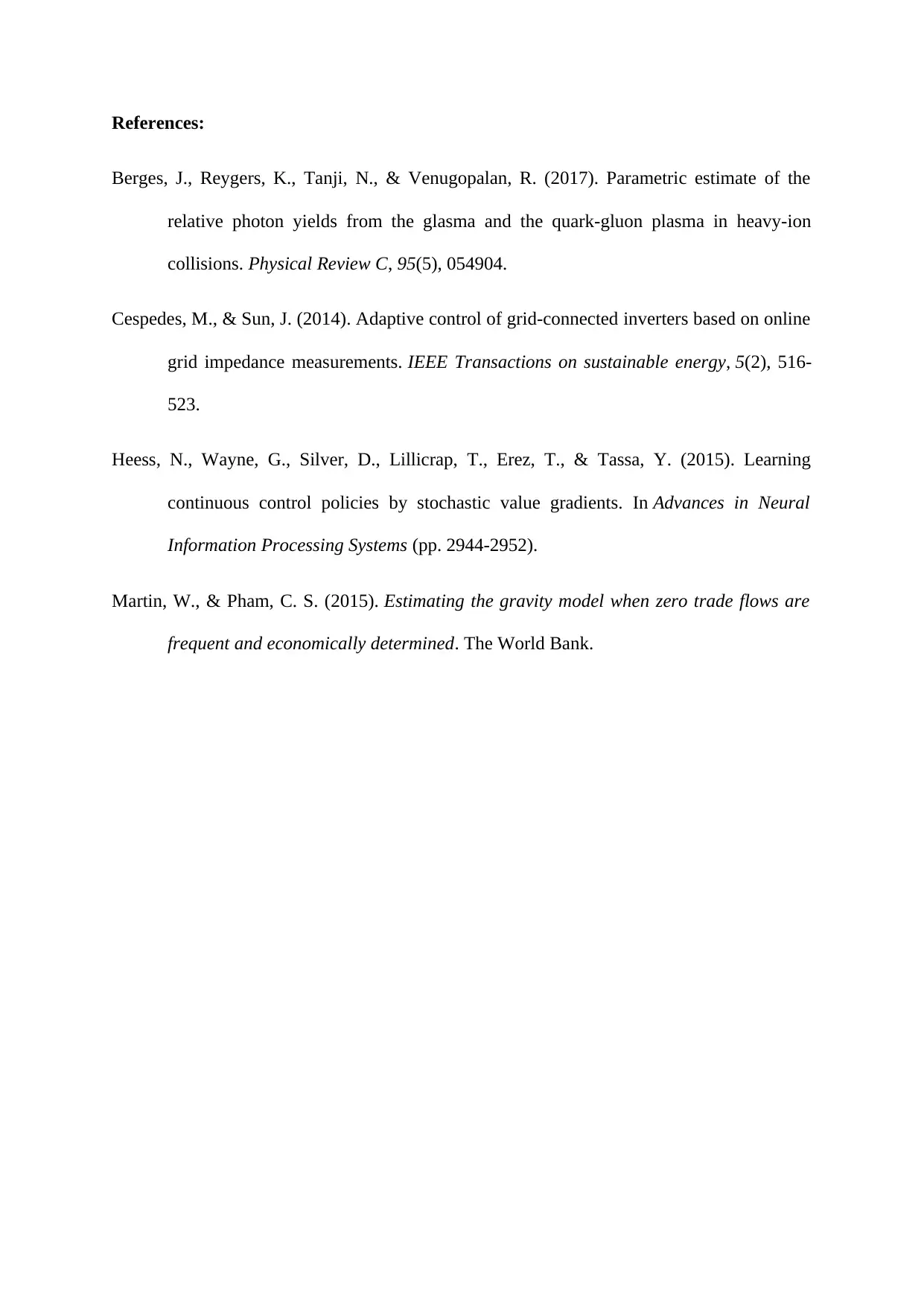Parametric Estimating Applicability in Complex Project Management
VerifiedAdded on 2023/06/07
|5
|767
|334
Report
AI Summary
This report delves into the Terry Cooke-Davies aspect of complexity, focusing on the applicability of parametric estimating in both engineering and non-engineering domains within project management. Parametric estimating, a technique used for estimating project time and cost, is typically applied in engineering projects. The report outlines the steps involved in implementing parametric estimating, including cost identification, data collection, normalization, and hypothesis creation. While the article suggests its primary use in technical departments, the report explores the potential and limitations of applying it to non-engineering projects. It argues that while every project involves time and cost factors, the limited technical work in non-engineering projects may render parametric estimating unnecessary, as simpler estimation processes might suffice. Ultimately, the report concludes that parametric estimation is the most accurate technique for estimating project cost and time and could potentially be used in non-engineering projects, such as welfare projects.
1 out of 5











![[object Object]](/_next/static/media/star-bottom.7253800d.svg)